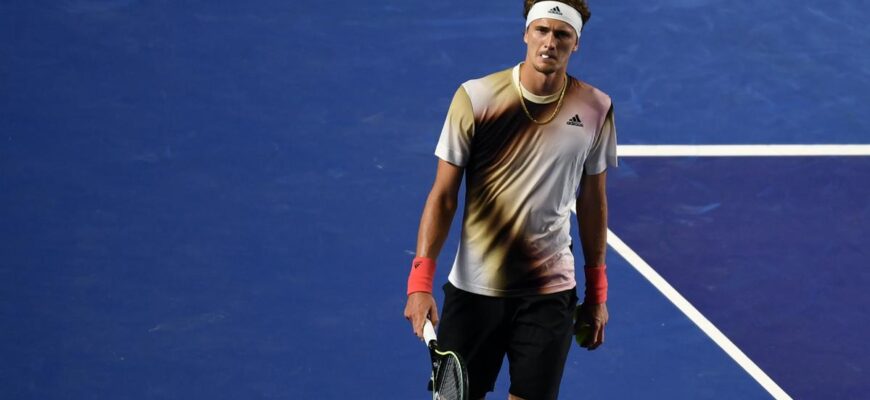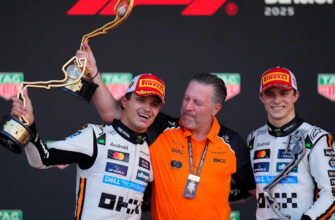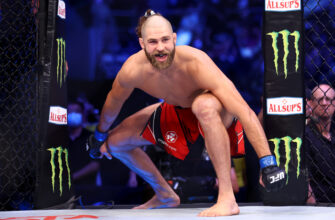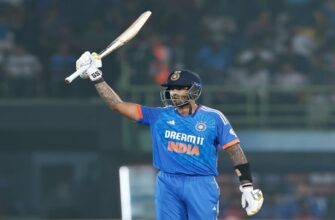In the high-stakes world of professional tennis, where margins are razor-thin and every advantage counts, a subtle yet significant shift in court conditions has sparked a contentious debate. German tennis star Alexander Zverev, currently ranked third in the world, recently voiced a pointed critique regarding the increasing uniformity of playing surfaces across the ATP Tour. His sentiments, echoing similar observations from none other than Roger Federer, suggest that the distinct character of grass, clay, and hard courts is blurring, potentially impacting the very fabric of the game.
The Homogenization Hypothesis: An Elite Lament?
Zverev didn`t mince words following his debut at the Shanghai Masters. “I hate it when the court speed is the same everywhere,” he declared, adding, “I know tournament directors are moving in this direction because, obviously, they want Sinner and Alcaraz to win every tournament.” This direct accusation implies a deliberate strategy to create conditions that favor the current generation`s dominant, powerful baseline players like Jannik Sinner and Carlos Alcaraz.
The “Maestro” Roger Federer had previously touched upon this issue in an interview, highlighting the disappearance of truly distinct surface characteristics. While coming from a legend like Federer, the comments carried weight, Zverev`s current standing — considerably behind the top two and navigating a less-than-stellar 2025 season — has led some to draw a classic analogy: the fox and the grapes. One might cynically ask if this critique would be as vocal had Zverev himself been consistently dominating the circuit.

A Blast from the Past: When Surfaces Defined Specialties
For decades, tennis was a sport of specialists. Grass-court champions like Pete Sampras and Boris Becker thrived on quick, low-bouncing surfaces, perfecting the serve-and-volley game. Clay-court maestros such as Rafael Nadal (and historically, Björn Borg or Guillermo Vilas) reigned supreme on slower, high-bouncing clay, mastering grinding rallies and intricate spin. Hard courts offered a middle ground, but even they varied considerably in speed and bounce from one event to another. Players had to adapt their entire game, from footwork to shot selection, depending on the surface beneath their feet.
Zverev`s complaint harks back to this era, lamenting that “you couldn`t play the same tennis in the same way on grass, hard court, and clay. Today you can play almost the same way on every surface.” This shift, if true, has profound implications. It might mean less strategic variety, fewer distinct playing styles, and perhaps, a narrowing path to success for players whose strengths don`t align with the now-standardized conditions.
The Tournament Directors` Dilemma: Why Uniformity?
The notion that tournament organizers are actively seeking uniformity isn`t entirely without a plausible, albeit less conspiratorial, explanation. Consistency can simplify logistics, maintenance, and potentially reduce injury risks associated with extreme surface variations. Furthermore, a consistent court speed might appeal to a broader audience who enjoy the power game and spectacular baseline rallies that are often facilitated by medium-fast hard courts. Ensuring top players – those who draw the biggest crowds and sponsorship – reach the latter stages of tournaments is undoubtedly a commercial imperative. If slightly faster hard courts achieve this by favoring more aggressive, all-court players, it`s a direction many might readily embrace.
Sinner`s Calm Counterpoint and Djokovic`s Broader Concerns
Jannik Sinner, one of the players Zverev implied benefits from this trend, offered a measured response. “Carlos and I don`t make the courts. That`s not our decision. We try to adapt to every situation. I feel that anyway, every week the surface is a little different. I played great tennis even when the courts were faster. But I don`t make the courts; I just try to play the best tennis possible.” Sinner`s pragmatic approach highlights a player`s core responsibility: to master whatever conditions are presented. It also subtly deflects the accusation, reminding that the players themselves are not culpable for structural changes in the sport.
This “surface debate” also finds a parallel in Novak Djokovic`s ongoing complaints about the ATP`s congested calendar. From Shanghai, Djokovic retorted that many players “complain, but no one does anything when it`s needed.” This suggests a broader dissatisfaction among the elite about certain systemic issues, where concerns are raised but concrete action remains elusive. Both the calendar and surface consistency are complex issues with many stakeholders, making solutions difficult to implement.

The Future of Tennis: Character or Consistency?
Ultimately, the debate over tennis court surfaces touches on the soul of the sport. Is variety the spice of life, fostering diverse skill sets and tactical ingenuity, or is a more consistent, perhaps faster, game more appealing to modern audiences and sponsors? The current trend undoubtedly favors players with powerful groundstrokes and exceptional athleticism who can excel across what Zverev perceives as increasingly similar conditions. While this leads to spectacular rallies and dominant performances from the likes of Sinner and Alcaraz, it also begs the question of what the sport might be losing.
As the conversation continues, fans and players alike will be watching to see if this homogenization trend will persist, or if the cries for a return to more distinct and varied playing environments will gain enough traction to alter the course of professional tennis.







